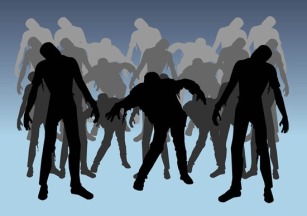
Every day I drive past the Methodist church in my town. Of the six churches in town, (yes, six- I live in New England) it is not the most beautiful, but I look forward to passing it nonetheless. Why? Because this church has in its congregation (and/or employ) a playful individual who is always putting up inspiring little sayings on the Church sign.
Several weeks ago the sign read “every saint has a past, and every sinner has a future.” The quote is from Oscar Wilde, but its literary origins are less important than the message and the location.
When I drove past the sign the first time, I was not familiar with the quote but its simplicity and kindness struck me. In our lives we are quick to judge others and, at times, ourselves. We place labels, easily categorizing individuals and situations. Part of this is the result of using what psychologists call heuristics- mental shortcuts that allow us to make decisions and problem solve when we are faced with incomplete data. We rely on these shortcuts, basing decisions off of past experience and impressions. Although efficient, these heuristics do not guarantee the best or even accurate decisions and assessments.
Using heuristics, we make assumptions about people we see. We categorize them as hard-working or lazy, virtuous or morally compromised and a million other shortcuts we have in our minds. We encounter them in a moment and having made a quick judgment, we see that judgment superimposed over the individual’s past and future. In this way we see an individual as born a particular way and living in the same manner until their death.
Of course, we know this is not true when we stop to think about it. But part of the point of heuristics is that their use means we are not really stopping to consider at all. In this way, our perceptions of others are incomplete, and if we are not careful, risk ossifying. We risk freezing someone in a single moment in time, or defining them perhaps, by their worst moment.
We do this to ourselves as well. We often believe that the way we have done things in the past is the only way we can do things. We let past behaviors, misdeeds and achievements define us. We justify unethical behavior in the present by coasting on earlier honesty. We discount current success, acutely feeling inadequacies from failures in our past. We begin to feel that we cannot change- that “we are who we are” however incomplete or biased those assessments may be.
Oscar Wilde’s quote points to the possibility of redemption- the most radical type of transformation. It asks us to see beyond a momentary mental shortcut and see the long arc of a life and the many choices that allow us to redefine ourselves over and over again.
I liked seeing the quote on the church’s sign. In a time when religions are often strident in their denunciations of the “sinner” but uninterested in helping those in need, the placement of the quote at a Church is welcoming. It is a recognition of the ways in which everyone we meet is merely at one moment in their journey and that the trajectory of that journey is not always discernable.
So wherever you are on your journey, know that the choices you make can continue or alter your path. You and the people around you are not frozen. We all have pasts and we all have the opportunity to change our futures.


